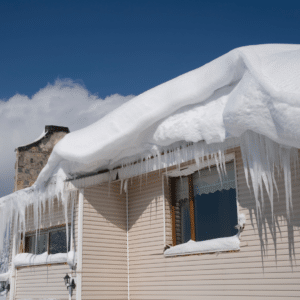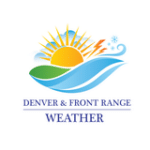Heavy snowfall can place significant stress on your roof, leading to potential damage and costly repairs. Recognizing roof stress due to snow accumulation is crucial to maintaining the integrity of your home. This article will help you identify the warning signs early, so you can protect your property and avoid emergencies.
Recognizing roof stress due to snow accumulation involves looking for several key indicators sagging roof sections, particularly in the middle, persistent leaks or water stains on ceilings and walls, cracks forming in interior walls or masonry, doors and windows becoming difficult to open or close, unusual creaking or popping noises coming from the roof structure.
- How Snow Affects Your Roof: The Science Behind the Pressure
- Signs of Roof Stress Due to Snow – What You Need to Watch For
- Assessing the Situation: When Should You Worry?
- Common Mistakes to Avoid When Dealing with Snow Accumulation
- Seeking Professional Help: Protecting Your Investment
- Proactive Roof Care for Long-Term Home Safety
Key Takeaways:
- Snow accumulation can quickly add up in weight, leading to potential structural issues. Monitor your roof’s condition during heavy snowfall periods to prevent damage.
- Watch for sagging roof sections, persistent leaks or water stains, cracks in walls, sticking doors and windows, and unusual creaking or popping noises.
- Evaluate your roof’s situation based on snow depth, design, and condition. When in doubt, consult a professional to ensure your roof’s safety.
- Avoid risky DIY solutions and neglecting small problems. Properly managing snow accumulation protects your home and prevents long-term damage.
- Don’t wait for a problem to escalate. Schedule regular inspections and rely on professional services to keep your roof in top condition.
By understanding these signs, you can take proactive steps to safeguard your roof. Continue reading to learn more about how to identify these issues early and when it’s time to call in a professional.
How Snow Affects Your Roof: The Science Behind the Pressure
Snow might look light and fluffy, but it can become dangerously heavy as it accumulates on your roof. According to the National Ag Safety Database (NASD), just one inch of ice weighs about five pounds per square foot. Wet, compacted snow can weigh up to 20 pounds per cubic foot, putting immense pressure on your roof. In regions like Colorado, where snow is frequent and often wet, the risk of roof stress due to snow becomes a real concern for homeowners.
When snow builds up, it exerts both downward and outward pressure. Over time, this pressure can cause structural issues, especially if your roof isn’t designed to handle the load. Recognizing roof stress due to snow accumulation early on can help you avoid extensive repairs or even a roof collapse.
Signs of Roof Stress Due to Snow – What You Need to Watch For
Roof stress due to snow manifests in various ways, and recognizing these signs is essential for protecting your home. Here are the critical indicators that your roof might be under too much stress:
- Sagging Roof Sections: One of the most noticeable signs is a sagging roof, particularly in the middle. If you notice any areas of your roof that appear to dip or bow under the snow’s weight, this is a red flag.
- Persistent Leaks or Water Stains: Snow can melt and seep into your roof, causing leaks. Water stains on your ceilings or walls indicate that moisture has penetrated the roof, which can weaken the structure.
- Cracks in Interior Walls or Masonry: Excessive snow weight can cause your home’s walls to crack, especially around doorways and windows. This indicates that your home’s structure is under stress.
- Doors and Windows Sticking: When the roof sags, it can affect the alignment of your home’s frame, making doors and windows difficult to open or close.
- Unusual Noises: Creaking or popping noises coming from the roof structure are a clear sign of stress. These sounds occur when the roof framing is adjusting under the pressure of the snow.
If you notice any of these signs, it’s crucial to address them immediately. Ignoring roof stress due to snow can lead to further structural damage and increase repair costs.
Assessing the Situation: When Should You Worry?
Not every bit of snow on your roof requires concern, but it’s important to know when action is necessary. According to the Insurance Information Institute, a roof can generally support around 20 pounds per square foot of snow before it becomes at risk of damage. Colorado’s winter storms can deposit heavy, wet snow in a short time, increasing the risk of roof stress.
If you observe any of the signs mentioned above, consider the following factors:
- Snow Depth: While a few inches of snow is usually not a concern, accumulations over a foot, especially of wet snow, should prompt a closer inspection.
- Roof Design: Flat roofs are more susceptible to roof stress due to snow, as the snow has nowhere to slide off. Steeper roofs can shed snow more efficiently.
- Age and Condition of Roof: Older roofs or those with existing damage are more vulnerable to stress from snow accumulation.
If you’re uncertain, it’s wise to call in a professional for an assessment. A roofing expert can determine if your roof is at risk and recommend appropriate action to prevent further damage.
Common Mistakes to Avoid When Dealing with Snow Accumulation
Many homeowners, in an attempt to handle roof stress due to snow, make mistakes that can worsen the problem. Here’s what to avoid:
- Ignoring Minor Leaks: Small leaks can rapidly escalate into significant issues if left unattended. Always address leaks as soon as they appear.
- Risky DIY Snow Removal: Climbing onto your roof to remove snow can be dangerous. Additionally, using shovels or other tools can damage shingles and roofing materials, exacerbating the stress on the roof.
- Assuming Roof Strength: Even if your roof has handled past snowfalls, it doesn’t mean it’s invincible. Roofs weaken over time due to weather exposure and age, making it crucial to regularly assess their condition.
Seeking Professional Help: Protecting Your Investment
If you suspect roof stress due to snow, it’s time to call in the professionals. A roofing expert can inspect for damage, remove snow safely, and recommend repairs if necessary. For Colorado homeowners, where winter weather can be unpredictable, investing in regular roof maintenance is a practical way to protect your property.
By choosing a reliable roofing company like Just Roofs & Gutters, you ensure that your roof receives the attention it needs to withstand Colorado’s harsh winters. Expert services can help you maintain your roof’s integrity, giving you peace of mind through the winter months.
Proactive Roof Care for Long-Term Home Safety
Recognizing roof stress due to snow accumulation is vital for homeowners, particularly in areas prone to heavy snowfall. By staying vigilant and addressing warning signs early, you can safeguard your home, avoid costly repairs, and ensure the safety of your family. Remember, timely professional intervention can make all the difference in maintaining your roof’s integrity and longevity.
Don’t wait until it’s too late to address potential roof stress due to snow accumulation. Contact Just Roofs & Gutters today to get your online roof estimate in seconds and discover how we can help safeguard your home against winter’s harsh conditions. Our expert team is here to provide reliable solutions, ensuring your roof remains strong, safe, and ready to face Colorado’s toughest weather.
What steps can I take to prepare my roof for heavy snowfall?
To minimize roof stress due to snow accumulation, have a professional inspect your roof for existing damage like loose shingles or leaks before winter, clean gutters to prevent water buildup, trim overhanging branches that could break under the weight of snow, add attic insulation to reduce the risk of ice dams, and consider installing snow guards to help manage snow loads and prevent large chunks from sliding off suddenly.
How often should I inspect my roof for stress during winter?
During winter, it’s best to inspect your roof after each heavy snowfall or ice storm. While you may not be able to get on the roof safely, you can conduct a visual inspection from the ground. Look for visible signs like sagging, leaks, or cracks in the walls. If you notice any unusual changes, it’s wise to contact a professional for a more thorough inspection.
Can I prevent roof stress due to snow accumulation by removing the snow myself?
While removing snow might seem like a good idea, DIY snow removal can be risky. Using improper tools can damage roofing materials, and climbing onto a snow-covered roof is hazardous. It’s best to use a roof rake from the ground or contact a professional snow removal service to safely clear the snow without causing additional stress to your roof.





